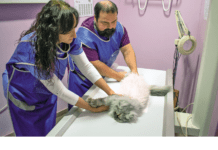Editors note: Few issues raise as much controversy as does declawing in cats, with strong views expressed by both opponents and proponents of the procedure. In an attempt to provide information to help veterinarians and their clients decide the best course to action, the American Association of Feline Practitioners (AAFP) recently developed a statement on declawing from which the following is adapted. To view the full statement visit www.aafponline.org/declaw_statement.htm
The AAFP strongly believes that it is the obligation of veterinarians to provide cat owners with complete education on feline onychectomy (declawing). There are significant misconceptions about normal feline behavior, and veterinarians are routinely presented with questions about destructive clawing behavior. The following points should be considered:
1. Scratching is a normal feline behavior, is a means for cats to mark their territory both visually and with scent, and is used for claw conditioning (husk removal) and stretching activity.
2. Owners must provide suitable implements for normal scratching behavior. Examples are scratching posts, cardboard boxes, lumber or logs, and carpet or fabric remnants affixed to stationary objects. Implements should be tall or long enough to allow full stretching and firmly anchored to provide necessary resistance to scratching. Cats should be positively reinforced in the use of these implements.
3. Appropriate claw care, consisting of trimming the claws every 1-2 weeks, may prevent injury or undesired damage to household items.
4. Temporary synthetic nail caps are available as an alternative to onychectomy to prevent human injury or damage to property.
5. Surgical declawing is not a medically necessary procedure in most cases.
6. The AAFP recognizes that feline onychectomy is an ethically controversial procedure; however there is no scientific evidence that declawing leads to behavioral abnormalities when compared to control groups. There is scientific data that show that cats who have undesired claw behavior are more likely to be euthanized or more readily relinquished, released, or abandoned, thereby contributing to the homeless cat population. Where scratching behavior is an issue as to whether or not a particular cat can remain as an acceptable household pet in a particular home situation, the decision to perform surgical onychectomy may be made.
7. In households where cats come into contact with immunocompromised people, extensive education about zoonotic disease potential should be discussed and documented. Surgical onychectomy is an option in such households.
8. If surgical onychectomy is performed, appropriate use of safe and effective anesthetic agents and the use of safe and effective peri-operative analgesics for an appropriate length of time are imperative.



